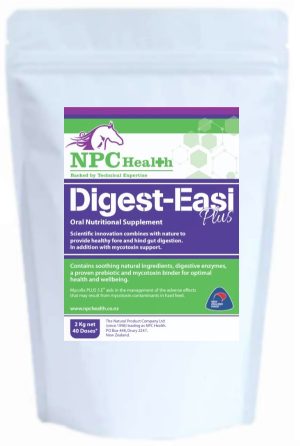Description
Rich grass such as green, growing grass can cause a rush of sugars undigested to flow into the hind gut (colon) of the horse. As the microbes in the hind gut are highly specialized to break down only fibre, this rush of sugars kills off the healthy bacteria. As they start to die they become toxic, the horse then absorbs into the blood stream. This chain reaction of events causes a digestive upset such as a grumpy gut, to more extreme cases colic, laminitis, acidosis and hind gut ulceration.
It is therefore important to maintain a healthy hind gut pH. Equi-shure helps by keeping the hind gut environment neutral and therefore the bacteria happy!








